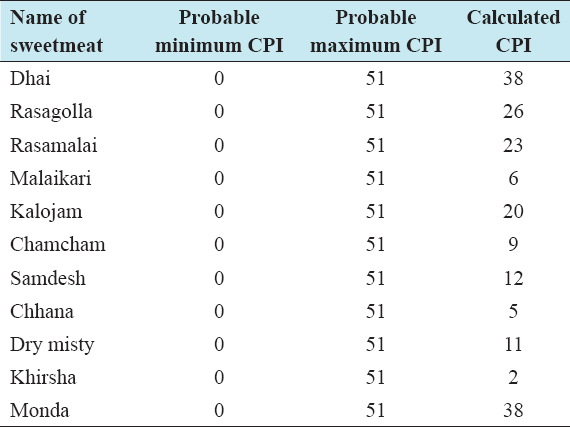Consumers’ preference index of some selected sweetmeat products available in Barisal City Corporation of Bangladesh
Golam Sarowar Munna1, Md Ashraful Islam1*, Md Imran Omar2, Tanni Chanda1, Md Abdul Matin1
1Department of Dairy Science, Faculty of Animal Science and Veterinary Medicine, Patuakhali Science and Technology University, Barisal Campus, Barisal, Bangladesh; 2Agricultural Economics Division, Bangladesh Agricultural Research Institute, Joydevpur, Gazipur-1701, Bangladesh
ABSTRACT
A survey was conducted through structured questionnaire at different locations of Barisal City Corporation regarding the consumers’ preference to different sweetmeats products. A total of 70 respondents of different age categories were directly interviewed to serve the purpose of the study. Level of preferences for different sweetmeats was categorized as high, medium, low, and no preference. The respondents of all ages represented that Dhai is the top among the highly preferred sweetmeat products (41% of total response), more than 27% responses of medium preference were to Rasagolla, and approximately 16% of the no preference response were directed to Chhana and Khirsha, respectively. Computed preference index (CPI) of different sweetmeats for all the respondents was calculated. The rank order on the basis of CPI for different sweetmeats was Dhai > Rasagolla > Rasamalai > Monda > Kalojam > Samdesh > Malaikari > Chamcham > Dry misty > Chhana > Khirsha. We have also analyzed and discussed the effect of age of the consumer on the preference toward different sweetmeat items. Dhai, Monda, Rasagolla, and Rasamalai were mostly preferred by the respondents aged <50 years. Dhai, Rasagolla, and Rasamalai are also preferred most by people above 50 year of age but they like Monda to the least level. Overall, preference toward different sweetmeat products by consumers of different age category varies widely. While Dhai, Rasagolla, Rasamalai, and Malaikari are preferred by most consumers irrespective of age, majority of the consumers showed no preference to products such as Khirsha and Chhana. Further study in a broader scale can help sweetmeat shops to figuring out the products most preferred by consumers of different age and categorization of product for different consumer groups.
Keywords: Sweetmeat, Preference index, age category, consumer survey











